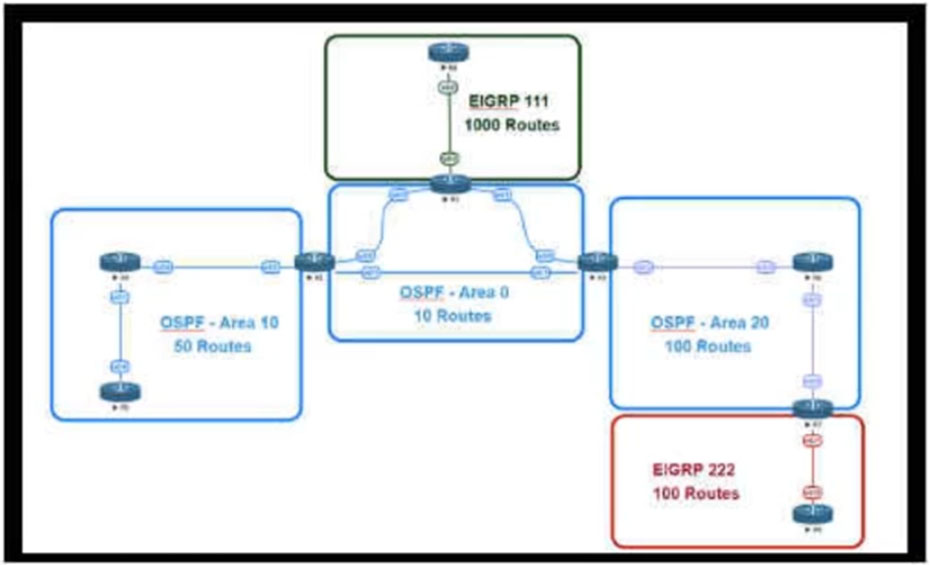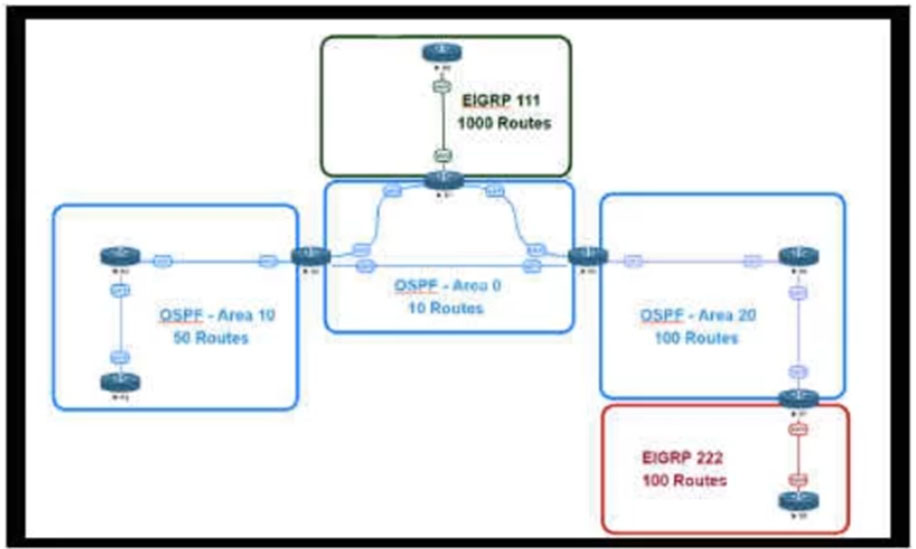An enterprise network has two core routers that connect to 200 distribution routers and uses full-mesh iBGP peering between these routers as its routing method.
The distribution routers are experiencing high CPU utilization due to the BGP process. Which design solution is the most cost effective?
E
Which purpose of a dynamically created tunnel interface on the design of IPv6 multicast services is true?
D
Company XYZ network runs IPv4 and IPv6 and they want to introduce a multidomain, multicast-based network. The new design should use a flavor of PIM that forwards traffic using SPT. Which technology meets this requirement?
A
Company XYZ has 30 sites running a legacy private WAN architecture that connects to the Internet via multiple high-speed connections. The company is now redesigning their network and must comply with these design requirements:
* Use a private WAN strategy that allows the sites to connect to each other directly and caters for future expansion
* Use the Internet as the underlay for the private WAN
* Securely transfer the corporate data over the private WAN
Which two technologies should be incorporated into the design of this network? (Choose two.)
BD

Refer to the exhibit. An engineer is designing the traffic flow for AS 111. Traffic from AS 111 should be preferred via AS 100 for all external routes. A method must be used that only affects AS 111. Which BGP attributes are best suited to control outbound traffic?
C
Which BGP feature provides fast convergence?
D
Reference:
https://www.cisco.com/c/en/us/td/docs/ios-xml/ios/iproute_bgp/configuration/xe-3s/asr903/17-1-1/b-irg-xe-17-1-asr903/b-irg-xe-17-1- asr903_chapter_01.pdf

Refer to the exhibit. This network is running OSPF and EIGRP as the routing protocols. Mutual redistribution of the routing protocols has been configured on the appropriate ASBRs. The OSPF network must be designed so that flapping routes in EIGRP domains do not affect the SPF runs within OSPF. The design solution must not affect the way EIGRP routes are propagated into the EIGRP domains. Which technique accomplishes the requirement?
D
Which two mechanisms avoid suboptimal routing in a network with dynamic mutual redistribution between multiple OSPFv2 and EIGRP boundaries? (Choose two.)
AE
Company XYZ has a new network based on IPv6. Some of the subnets that they are planning to use will be confidential and need an addressing scheme that confines them to the local campus network. Which type of IPv6 addresses can be used for these networks in the IPv6 addressing design?
C
Reference:
https://study-ccna.com/ipv6-unique-local-addresses/

Refer to the exhibit. An engineer is designing a multiarea OSPF network for a client who also has a large EIGRP domain. EIGRP routes are getting redistributed into OSPF. OSPF area 20 has routers with limited memory and CPU resources. The engineer wants to block routes from EIGRP 111 from propagating into area
20 and allow EIGRP 222 routes to flow in. Which OSPF area type fulfills this design requirement?
D